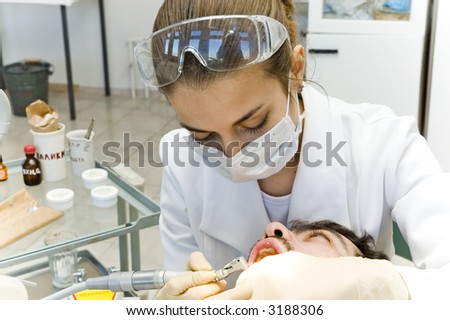Dental problems can affect your oral health in different ways. One such problem is a crossbite, a condition that occurs when a tooth is incorrectly angled in relation to the corresponding tooth on the other side of the jaw. In this blog post, we’ll look at what crossbite is, its symptoms, diagnosis, and treatment.
What is Crossbite?
A crossbite is a type of dental malocclusion (misalignment) in which one or more upper teeth bite on the inside of the lower teeth. This can happen on both the front and side teeth. There are two types of crossbite:
Anterior crossbite: This type of crossbite occurs when the front teeth are affected.
Posterior crossbite: This type of crossbite occurs when the side teeth are affected.
Crossbites can be unilateral (affecting one side) or bilateral (affecting both sides).
What Causes Crossbite?
Several factors can contribute to the development of a crossbite. These include:
Misaligned Teeth
Misaligned teeth are the most common cause of crossbite. When the teeth are not properly aligned, it can be difficult for them to fit together correctly, leading to a crossbite.
Abnormal Jaw Development
Another cause of crossbite is abnormal jaw development. This can occur if the jaws do not develop evenly, which can cause the teeth to become misaligned.
Tongue Thrusting
Tongue thrusting is a condition in which the tongue protrudes forward when you swallow. This can cause the teeth to become misaligned and can lead to a crossbite.
What are the Symptoms of Crossbite?
The most common symptom of crossbite is misaligned teeth. However, other symptoms may include:
- Difficulty chewing or biting
- Jaw pain
- Tooth wear
- Headache
- Earache
What are the Complications of Crossbite?
If left untreated, a crossbite can lead to several complications, such as:
Tooth wear: When the teeth are misaligned, it can cause them to rub against each other and wear down.
Jaw problems: Crossbite can also cause problems with the jaw, such as TMJ (temporomandibular joint) disorder.
Tooth loss: In severe cases, a crossbite can lead to tooth loss.
How is Crossbite Diagnosed?
A dentist or orthodontist typically diagnoses crossbite during a routine exam. Your dentist will look at your teeth and jaw to see if there are any signs of misalignment. They may also take X-rays to better view your teeth and jaw.
How is Crossbite Treated?
The treatment for crossbite will depend on the severity of the condition. In some cases, no treatment may be necessary. However, if the crossbite is severe, treatment may be needed to prevent complications. Treatment options for crossbite include:
1. Dental Appliances
If you are diagnosed with a crossbite, your dentist may recommend dental appliances to correct the condition. Dental appliances include Invisalign braces and retainers.
2. Surgery
In some cases, surgery may be needed to correct a crossbite. This is typically only done in severe cases where other treatments have not worked.
3. Orthodontic Treatment
Orthodontic treatment can also be used to treat a crossbite. This type of treatment uses braces or other devices to slowly move the teeth into their proper position.
4. Jaw Surgery
Jaw surgery may be necessary in severe cases of crossbite. This type of surgery is typically only done if other treatments have not worked.
How to Avoid Crossbite?
There are several things you can do to avoid crossbite, such as:
1. Practice Good Oral Hygiene
Practicing good oral hygiene is best to avoid crossbite and other dental problems. Be sure to brush and floss your teeth daily and see your dentist for routine checkups and cleanings.
2. Avoid Tongue Thrusting
Tongue thrusting can lead to a crossbite, so it is important to avoid this habit. If you find yourself tongue thrusting, try to train yourself to swallow without sticking your tongue out.
3. Wear a Mouthguard
If you play sports or participate in other activities that put your mouth at risk for injury, be sure to wear a mouthguard. A mouthguard will help protect your teeth from damage and can prevent a crossbite from developing.
4. See Your Dentist Regularly
See your dentist regularly for checkups and cleanings. This will allow them to catch any problems early and prevent them from becoming worse.
5. Get Orthodontic Treatment
If your teeth are already misaligned, you may need orthodontic treatment to correct the problem. Orthodontic treatment can help straighten your teeth and prevent a crossbite from developing.
It is important to be able to identify and diagnose a crossbite so that it can be treated. If you think you might have a crossbite, then we recommend seeing your dentist for an evaluation. Your dentist should also give recommendations on how best to treat the condition based on its severity and what type of tooth alignment there is. In some cases, a simple appliance can be used to fix the problem, while surgery may be necessary in other cases.
